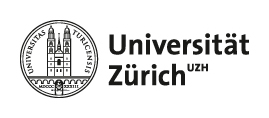2D Materials

In this project we investigate two dimensional (2D) materials, i.e. materials that consist in surfaces and/or interfaces only.
The project significantly profited from international collaborations in concerted research projects
(STREP and Sinergia).
Today we are members in the Graphene Flagship.
In collaboration with Dr. Marcella Iannuzzi (UZH), Dr. Matthias Muntwiler (PSI Villigen), Dr. Matthias Schreck (U Augsburg, Germany)
and the European Flagship Graphene (WP3).
Achievements
1999 synthesis of single layer hexagonal boron nitride on nickel.
2003 the h-BN nanomesh was discovered.
2007 lateral electrical fields were found in the pores of the nanomesh super-honeycomb.
2012 single atoms may be immobilized beneath the nanomesh forming nanotents and the concommitant vacancy defects
lead to the "can-opener" effect.
2014 CVD growth of h-BN monolayer on 4-inch wafers.
2016 account on the electrochemical switching of the corrugation of the nanomesh and a concomitant macroscopic change of stiction.
2018 transfer of centimeter sized h-BN on arbitrary substrates.
2020 back-transfer of h-BN on Rh: The quality of h-BN layer can be further improved via 2D distillation.
2022 record thermal stability of h-BN on Pt(111).
2025 move of the Lab to Binnig and Rohrer Nanotechnology Center. Now follow on the SwissBN home page.
Team
Latest publications
- Benchmarking the integration of hexagonal boron nitride crystals and thin films into graphene-based van der Waals heterostructures
2D Mater.12, 015017 (2025)
→ DOI: 10.1088/2053-1583/ad96c9 - Monolayer calibration of endofullerenes with x-ray absorption from implanted keV ion doses
J. Vac. Sci. Technol. A 42, 023406 (2024)
→ DOI: 10.1116/6.0003302 - Correlation of Work Function and Conformation of C80 Endofullerenes on h-BN/Ni(111)
Adv. Mater. Interfaces 2300935 (2023)
→ DOI: 10.1002/admi.202300935 - Growing sp2 materials on transition metals: calculated atomic adsorption energies of hydrogen, boron, carbon, nitrogen, and oxygen atoms, C2 and BN dimers, C6 and (BN)3 hexamers, graphene and h-BN with and without atomic vacancies
Nanoscale Adv. 6 268 (2024)
→ DOI: 10.1039/D3NA00472D - Efficiency of electron doping to monolayer hexagonal boron nitride by alkali metals
Appl. Phys. Lett. 122, 071601 (2023)
→ DOI: 10.1063/5.0140074 - ...[→ more publications]




